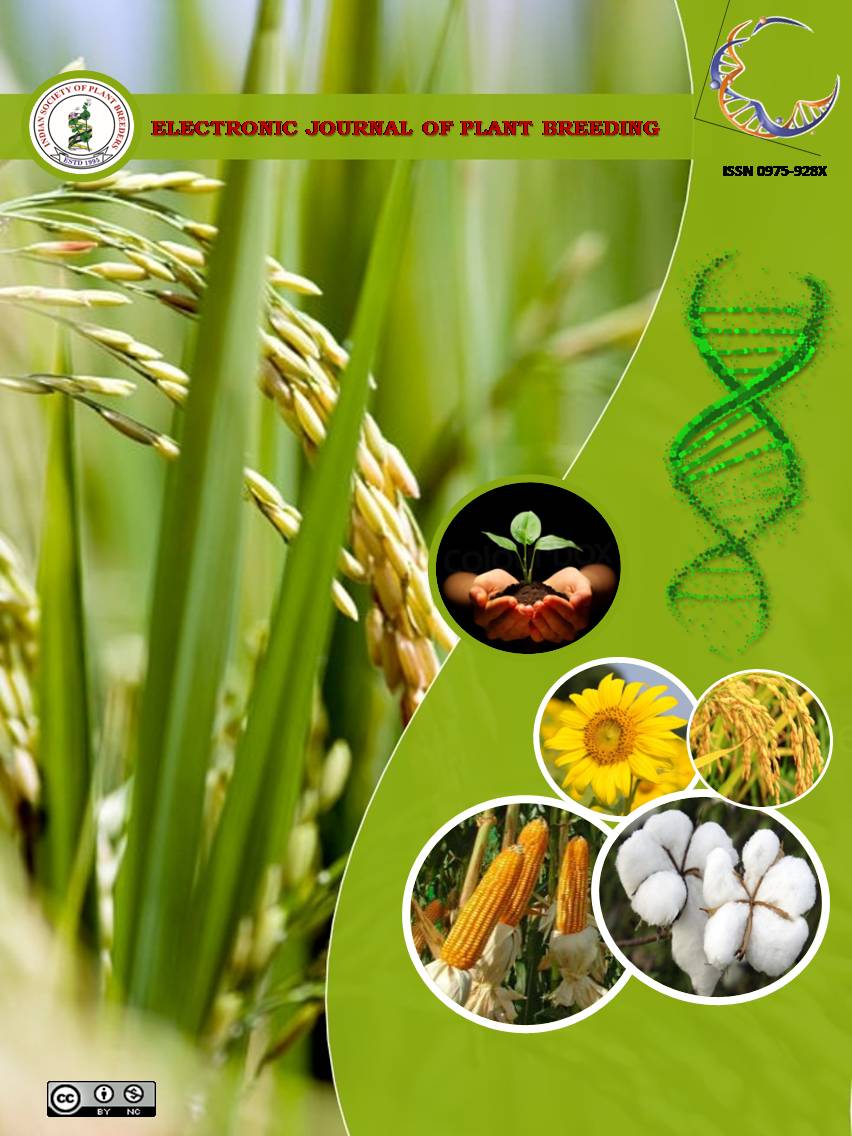Studies on genetic divergence in rice germplasm (Oryza sativa L.)
Genetic divergence
Abstract
Genetic divergence of 50 rice genotypes was studied for thirteen quantitative plant growth and yield related traits was estimated using Mahalanobis’s statistics (D2) analysis. The genotypes were grouped into 8 clusters. The cluster VII was the largest with 12 genotypes followed by cluster III with 8 genotypes, cluster V & VI with 7 genotypes each, while cluster I & IV with 6 genotypes each, cluster VIII with 3 genotypes and cluster II with 1 genotype of rice. The inter cluster distances were higher than the average intra-cluster distance reflecting wider genetic diversity among the genotypes of different groups than those of the same cluster. The highest inter-cluster distance was observed between cluster V & VI1 whereas the highest intra-cluster distance was found in the cluster VI indicated that the highly divergent types existed in these clusters. This study concluded that the genotypes UR-28 followed by UR-3 and DRR-11 were the best genotypes for grain yield as for as characters concerned for harvest index, no. of spikelet per panicle, no. of tillers per plant. The present study registered high GCV along with high genetic advance for no. of panicles per plant, no. of tillers per plant. So these genotypes with grain yield traits should be given top priority during selection of the genetically divergent parents for further utilization as parents in breeding programme.

It is certified that:
- The corresponding author is fully responsible for any disputes arising due to the publication of his/her manuscript.
- The article has been seen by all the authors who are satisfied with its form and content.
- The sequence of names of authors in the by-line is as per their relative contribution to this experiment, giving due credit to all scientists who made notable contribution to it.
- All the authors fully understand that inclusion of any other co-authors or exclusion of any co-authors is not possible once the article has been submitted to the journal.
- The corresponding author takes full responsibility for this article.
- The address of the organization where the research was conducted is given.
- The article is exclusive for this journal, and the results reported here have not been sent (and will not be sent during its consideration by this journal) for publication in any other journal.
- Authors agree to abide by the objective comments of referees and do agree to modify the article into a short note as per the recommendation, for publication in the Electronic Journal of Plant Breeding.
- If published in Electronic Journal of Plant Breeding, the copyright of this article would vest with the Indian Society of Plant Breeders, who will have the right to enter into any agreement with any organization in India or abroad engaged in reprography, photocopying, storage and dissemination of information contained in it, and neither we nor our legal heirs will have any claims on royalty.


